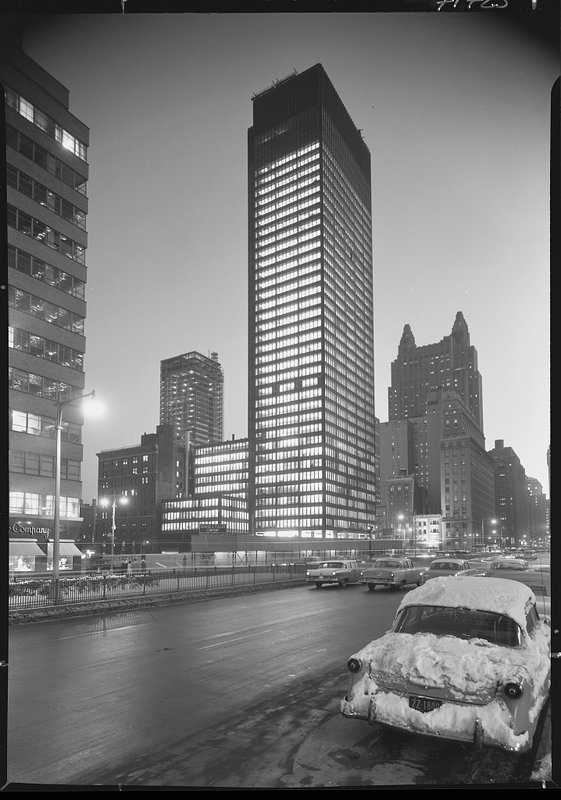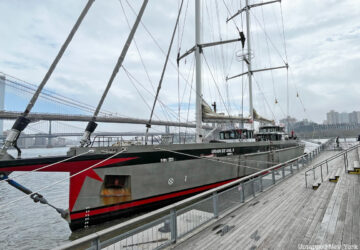7. The Idea Behind The Design Was to Visibly Display Its Basic Structure
 Photo via Library of Congress
Photo via Library of Congress
Mies firmly believed that the building’s structural aspects alone create natural beauty and allow the building to transparently communicate with anyone who saw the building. His ideas were strictly minimalist; he found extravagant decoration superfluous.
In fact, according to an article in Phaidon, the common phrase “less is more” can be attributed to Peter Behrens, who was a “godfather figure” to Mies and is considered the first industrial designer ever. Behrens first gave him this advice while Mies showed him sketches in his office, and it remained with him throughout his architectural career.
Lambert agreed with Mies’s principles; in 1954 she wrote, “Mies forces you in. You might think this austere strength, this ugly beauty, is terribly severe. It is, and yet all the more beauty in it.”
Though Mies wanted everyone to see the building’s actual steel frame, American building codes mandated that fireproof material cover the steel frame. Though most architects used concrete to cover structural steel, Mies also used bronze-toned I-beams to cover this concrete layer so that the structure would not be completely hidden.
Altogether, he used 1500 tons of bronze when creating the building. Since then, this strategy of using a “reinforced concrete” covering has been increasingly used – one of many ways the Seagram Building is an architectural legacy.





